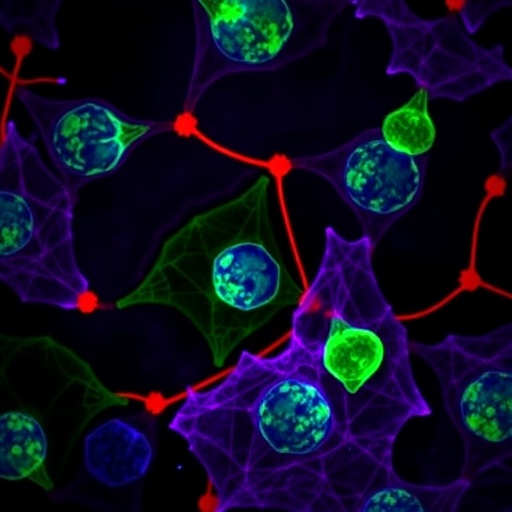p53 influences an important molecular process specific to females that is necessary for the brain and spinal cord to form
Credit: Ms Etsuko Uno and Dr Drew Berry, Walter and Eliza Hall Institute
New research has revealed how the famous tumour suppressor gene p53 is surprisingly critical for development of the neural tube in female embryos. This is important because healthy development of the neural tube is needed for the brain and the spinal cord to form properly.
The study, published today in the journal Cell Reports, explained p53’s involvement in a molecular process specific to females called ‘X chromosome inactivation’. The new findings helped to clarify why females are significantly more likely than males to be born with neural tube birth defects, such as spina bifida.
The research, led by Associate Professor Anne Voss, Professor Andreas Strasser and Associate Professor Marnie Blewitt from the Walter and Eliza Hall Institute of Medical Research, was performed in collaboration with researchers at the Peter MacCallum Cancer Centre.
The collaborative teams were surprised to discover how the gene p53, famous throughout scientific literature and history for its role in protecting us from cancer, also played a pivotal role in healthy neural tube development.
Professor Strasser said the research showed how p53 influenced the function of genes required for fostering the production of healthy neural tube cells in the female embryo.
“Healthy development is a very precise and precariously balanced process. p53 helps with this balancing act in the female embryo by producing normal levels of Xist RNA, part of an intricate molecular process important for X chromosome inactivation. This in turn leads to healthy neural tube development. Simply put, healthy neural tube development in the female embryo requires the help of p53,” he said.
Associate Professor Voss said the study confirmed a long-standing theory that females had an additional risk factor for neural tube defects and that a breakdown in the associated X chromosome inactivation process could help to explain why females were more likely than males to have neural tube-related birth defects.
“Females have two copies of the ‘X’ sex chromosome, while males only have one copy. In order to maintain health in females, one of these X chromosomes must be inactivated in cells early on during development. If this inactivation does not occur efficiently, the neural tube will not form properly. Previous research indicated that p53 played a role in normal neural tube development, but it had never been shown exactly how this worked until now,” she said.
Professor Strasser said the findings were a terrific example of how strong collaborative research could drive remarkable discoveries. “Together our teams have surfaced exciting new information about a gene that has been intensely studied and is very well understood,” he said.
###
Media Contact
Arunee Wilson
[email protected]




